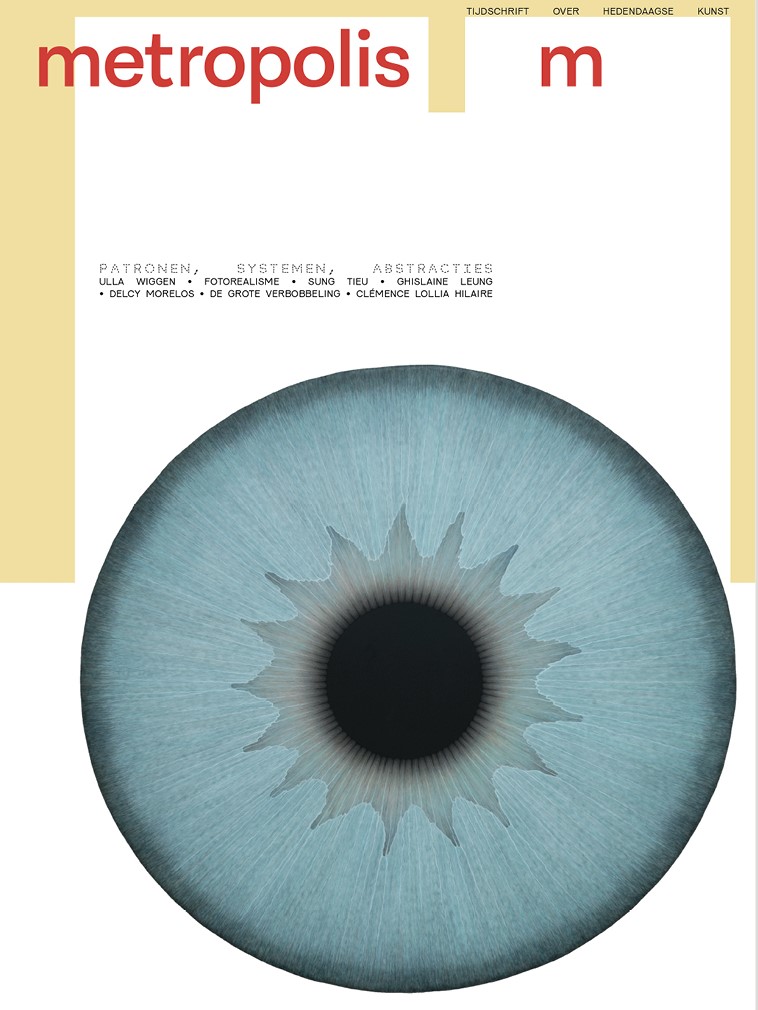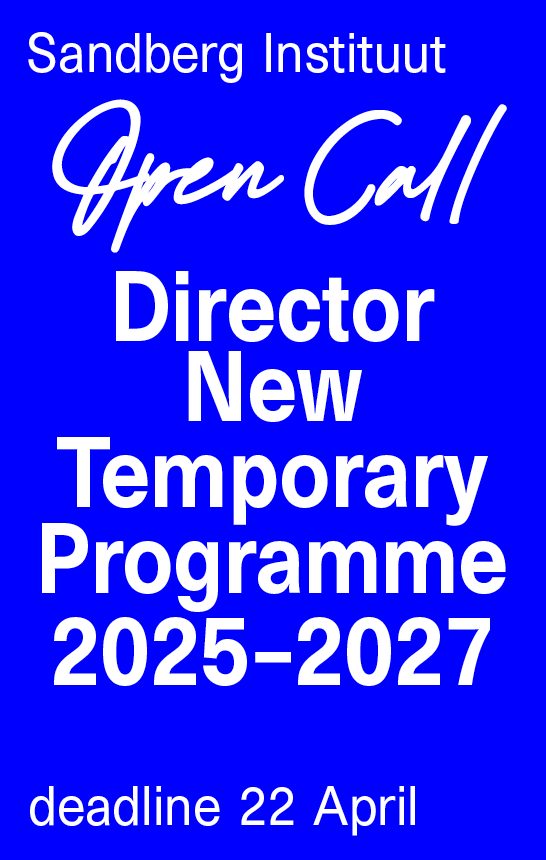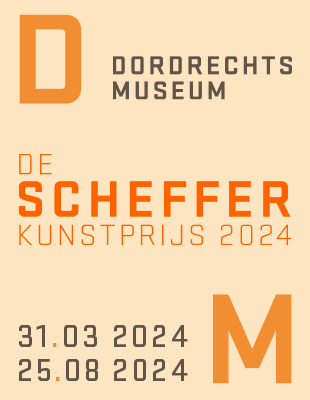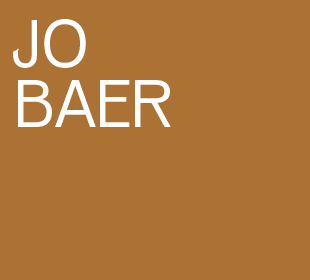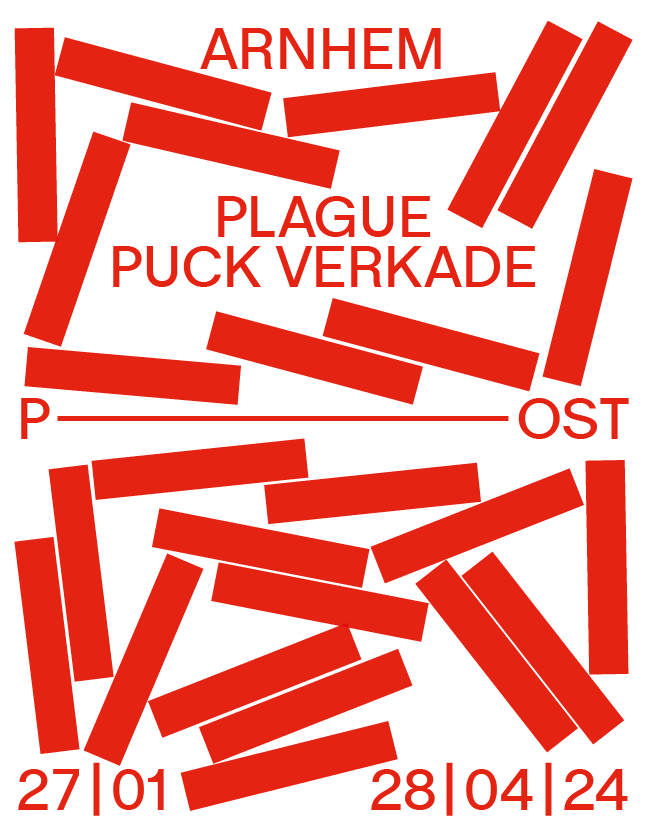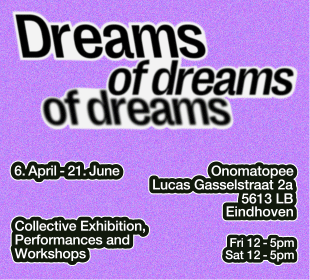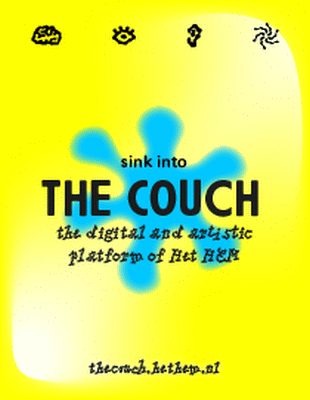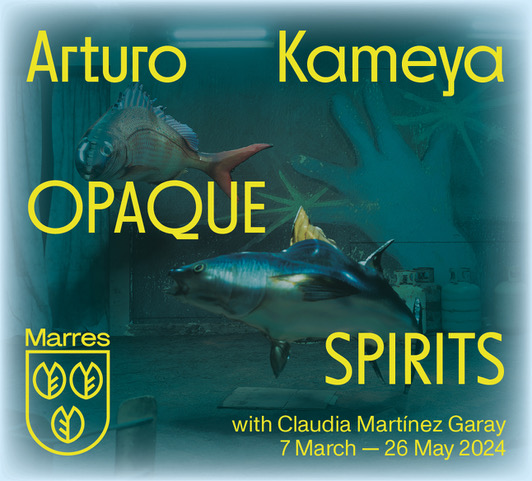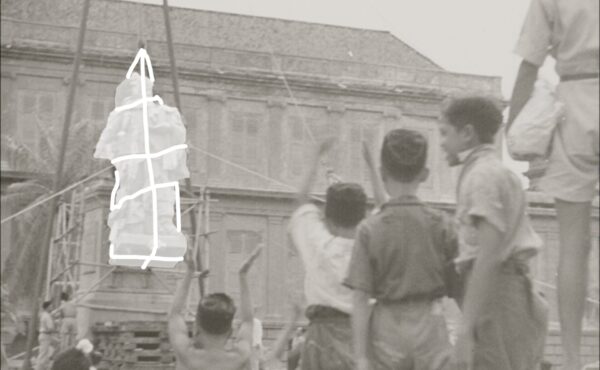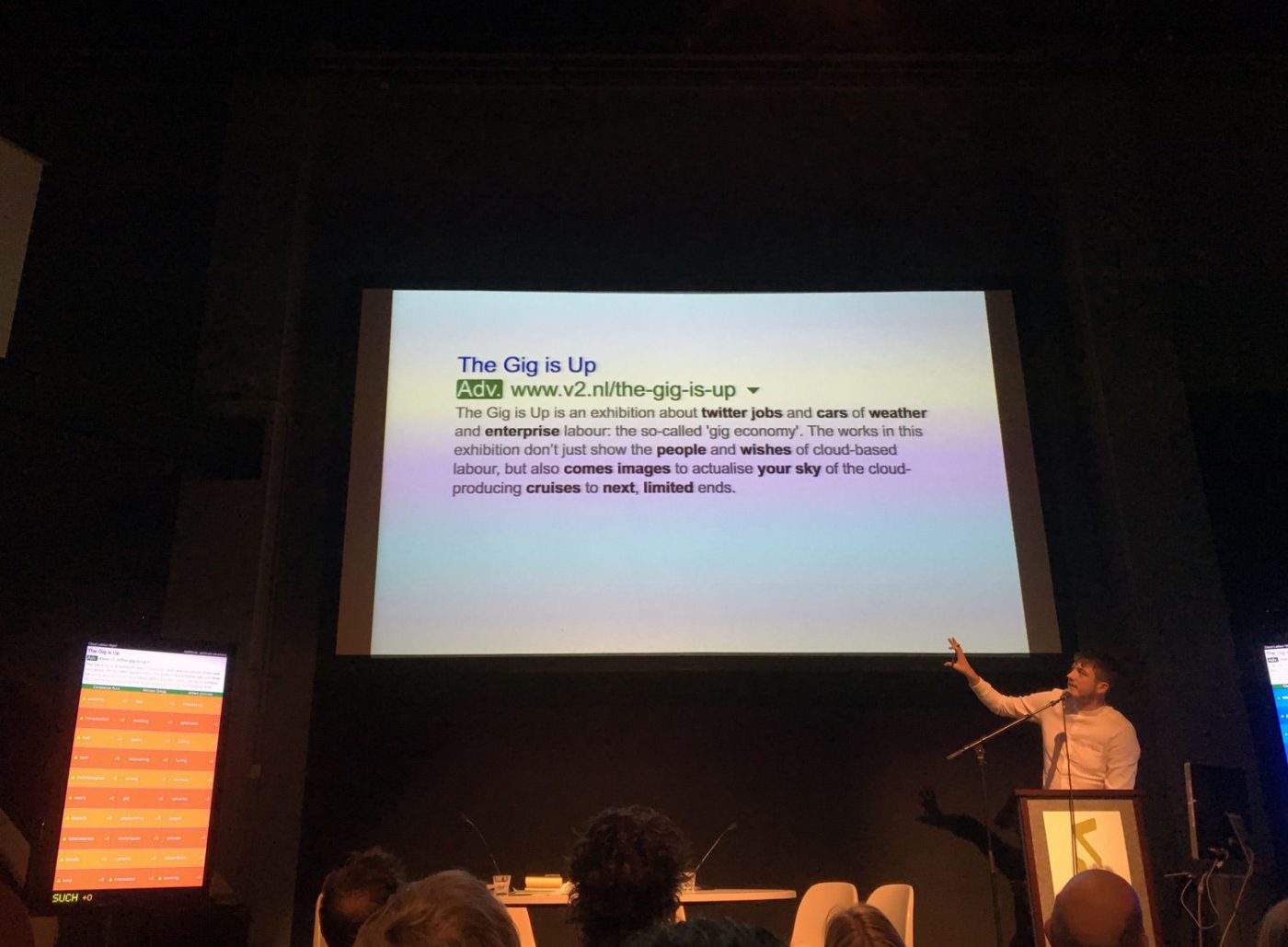
Cloudsourcen vanuit het atelier
‘Gig economy’ is de nieuwe diensteneconomie die zich via internet aan het ontwikkelen is, en waarbij mensen voor weinig geld een dienst aanbieden (zij het een taxirit, de tijdelijke verhuur van de woonruimte, of een klusje). Naar aanleiding van een symposium bij V2 over deze nieuwe economie vroeg Joris Lindhout via fiverr.com kenmore005 over het onderwerp te schrijven à raison van 5 dollar.
Op 25 november opent The Gig Is Up – How New Technologies Are Reshaping The Future Of Work bij V2 in Rotterdam. De tentoonstelling onderzoekt de beloftes van flexibiliteit, productiviteit en winst die platforms zoals Airbnb, Uber en Fiverr hun gebruikers voorhouden. Bij wijze van vooraankondiging organiseerde V2 op 27 oktober al een Cloud Labour Night: een avond waarop dit ‘nieuwe werken’ kritisch tegen het licht gehouden werd door specialisten Melissa Gregg, Constanze Kurz, Willem Schinkel, Geert Lovink en Sebastian Olma.
Helaas was er weinig nieuws onder de zon: Gregg maakt zich zorgen over de rechten van de toekomstige arbeider en Schinkel ondersteunde haar met een aantal quotes van Marx. Kurz, woordvoerster van de Duitse Chaos Computer Club, zag een meer rooskleurige toekomst waarin technologie juist een waarborg vormt voor de arbeider van de toekomst. De meest interessante bijdrage van de avond was afkomstig van kunstenaarscollectief Human Index. Door middel van spraakherkenningssoftware genereerden zij een aantal Google AdWords advertenties voor de komende tentoonstelling. De software selecteerde daarvoor in realtime termen uit de presentaties die statistisch gezien tot de meeste hits moesten leiden. De vreemde en soms hilarische resultaten hiervan gaven op deze Cloud Labour Night het meest duidelijke beeld van de discrepantie tussen effect en affect die de digitalisering van het traditionele producent-consument model met zich meebrengt.
Een vraag waar ikzelf mee bleef zitten is wat deze ‘gig economy’ de beeldende kunsten kan brengen. Kunstenaars zoals Constant Dullaart, Keren Cytter, Jonas Lund en de onlangs afgestudeerde Puck Schot hebben allemaal gebruik gemaakt van Fiverr om (gedeeltes van) hun werk te produceren. Wat betekent het voor de beeldende kunst dat iedere kunstenaar toegang heeft tot personeel, iets wat tot voor kort alleen de economisch meest succesvolle kunstenaars beschoren was? Ik vroeg Fiverr gebruiker kenmore005 om me dit uit te leggen in een artikel van 500 woorden, geschreven volgens Search Enige Optimalisation (SEO) richtlijnen. Ik betaalde hem $5,00 waarvan $1,00 naar Fiverr ging. Dit is het resultaat:
What can the Gig Economy Bring to the Contemporary Fine Arts?
It was not long ago that most people associated the term “gig” with a musical performance. Today, a gig is now a common term for freelancers who work on short-term contracts or a limited engagement of a task. Fiverr is an example of a digital platform that allows gigs to be purchased and performed by many thousands of people around the world.
On the internet, the gig economy has become the perfect platform between companies looking for short term help and freelancers who can work as many gigs as they can earn. The system is providing for people to work on their own at their preferred pace which has created an entirely new economy. The cloudwork is also providing additional space which in turn allows more to participate and broadens the potential market to include areas such as contemporary art and net art.
How Contemporary Art Works in the Gig Economy?
There are many questions about whether the gig economy supported by digital platforms such as Fiverr can work in the contemporary art scene. While business and art have a relationship that goes back many centuries, the use of the gig platform in terms contemporary and even net art is still being questioned.
Flexibility: One of the most profound advantages provided by this type of economic platform is the flexibility of services provided. You can find a wealth of different gigs on Fiverr alone, some of which include those who sell contemporary or net art at a low, affordable price. With increased payment options, there are artists who create a wide variety of materials that help them make a living. All of this is with the caveat that what they produce is what is in demand.
Cost: The reason why this type of economy exist is because of the low price. Because digital platforms are easy to maintain and low in overall costs, the price for their use is nominal and often included in the sale of gigs which means that providers and customers need not pay upfront for the services which are being sold.
Passion & Creativity: It is a legitimate question of whether passion and creativity are the driving forces in the gig economy. But it can be stated that they are integral parts that allow it to survive and thrive in its current form. While there is a great deal of repetition and customer demand often dictates the direction of many different fields, the passion and creativity of this platform is still vibrant and alive.
One big concern is whether the platforms and cloudwork systems used to promote gigs may lead to the deconstruction of the art scene and turn it back to a more feudalistic system that only the few can benefit while the rest get exploited?
The answer may be found in the future of the internet itself as the constant shifts and changes help prevent a singular system from taking hold for very long. While the current conditions of the free market exist on the web, any regression to a more feudalistic approach will be dispersed by new ideas and the advancement of technology.
Kenmore005’s antwoord ligt in het verlengde van het standpunt dat Constanze Kurz innam op de Cloud Labour Night. Of de beeldende kunst zelf wellicht een prikkelender antwoord heeft kan je van 25 november tot en met 18 december gaan zien bij V2 in Rotterdam: http://v2.nl/the-gig-is-up.
Joris Lindhout & kenmore005
